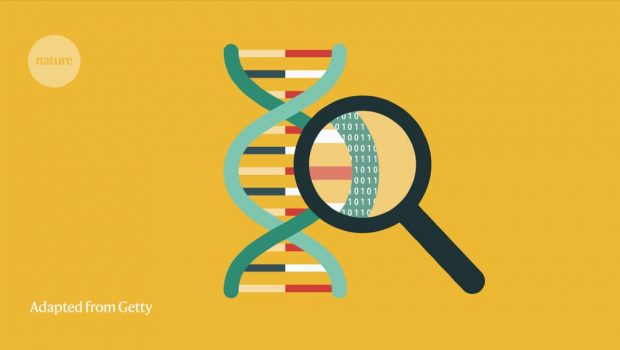Technology alliance boosts efforts to store data in DNA
The digital universe could add some 175 zettabytes of data per year by 2025, according to the market-analysis firm IDC. That’s 175 with 21 zeroes after it. That amount of information will require massive data centres and vast energy resources to maintain. A small but growing group of researchers advocates DNA as a sustainable, stable replacement.
These efforts got a lift last November, when a coalition of computing and biotech firms including Microsoft, Twist Bioscience, Illumina and Western Digital announced that they were forming the DNA Data Storage Alliance (DDSA). The alliance hopes to “organize the industry and think of how to build the whole ecosystem for DNA data storage”, says Xavier Godron, chief technology officer at DNA Script, a Paris-based developer of bench-top DNA synthesizers and a member of the alliance.
Karin Strauss, a researcher at Microsoft in Redmond, Washington, says the DDSA formed in response to the “critical mass and community” coalescing around the technology, which until recently was largely theoretical. “It sounded like science fiction five years ago. It’s really starting to happen,” she says.
The process of DNA data storage combines DNA synthesis, DNA sequencing and an encoding and decoding algorithm to pack information into DNA more durably and at higher density than is possible in conventional media. That could be up to 17 exabytes per gram1.
In a demonstration of the technology last October, geneticist George Church at Harvard Medical School in Boston, Massachusetts, and his team described a way to encode a snippet of music from the video game Super Mario Bros in the transitions between runs of identical synthetic genetic bases, and then retrieve it and play it back on a computer2. Olgica Milenkovic at the University of Illinois at Urbana-Champaign and her team have developed a ‘DNA punch card’ strategy that encodes data in nicks made in the DNA backbone; they used the technique to store a copy of former US president Abraham Lincoln’s Gettysburg address and an image of the Lincoln Memorial3. And Robert Grass at the Swiss Federal Institute of Technology in Zurich and his team have devised a strategy for embedding digital genetic information — instructions for 3D printing an object, for instance — into the object itself, an approach they call “DNA-of-things”4.
The low-hanging fruit for DNA data storage is what Twist Bioscience chief executive Emily Leproust in San Francisco, California, calls ‘cold data’ — data that are written once and read rarely, if ever. That’s because DNA remains stable for a long time, but data access — through sequencing and data analysis — is slow.
DNA has already proved itself to be up to the task of big data, albeit not in peer-reviewed publications. The DNA-storage firm Catalog in Boston, Massachusetts, another alliance member, announced in 2019 that it had used its DNA-writing technology to encode all of English-language Wikipedia into genetic material. And last year, Twist announced that it had stored an episode of the Netflix series Biohackers.
Others see broader opportunities, and Church, for one, encourages researchers to think outside the box. Imagine fruit flies that can record video of everything they see in their DNA, or human tissues capable of storing physiological data. “If you have a new revolution, it’s usually misguided to try to apply it to the old way of thinking,” he says.








Gloss